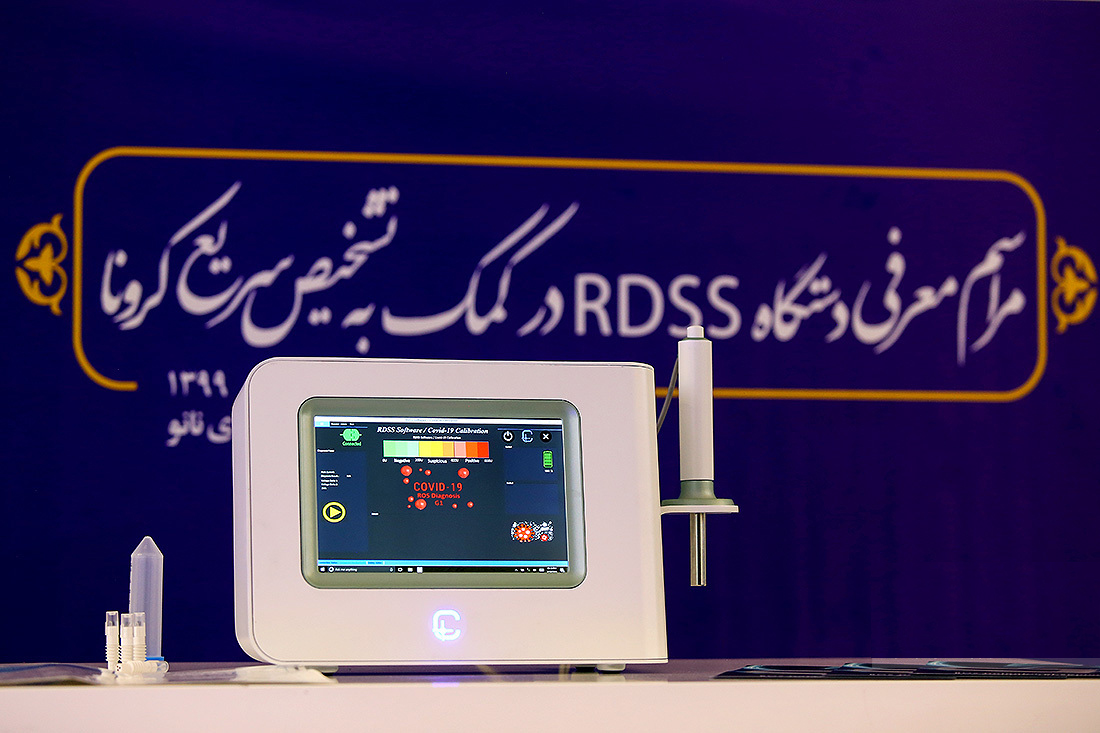Dr. Mohammad Abdolahad, a researcher at the Nanobioelectronics Laboratory of the Faculty of Electrical and Computer Engineering, Tehran University, at the unveiling ceremony of his scientific achievement in an exclusive interview with a reporter, said that: In patients with corona, the amount of ROS (Reactive Oxygen Species) in the patient’s sputum changes, even when the symptoms of the disease have not yet been revealed, and this sensor can detect the presence of the disease using this indicator. He continued: ” increase in ROS in sputum can be attributed to the inflammatory function of the body against the presence of the virus. Also, cellular activities during the opposition with the virus cause the formation of ROS.”
Promising results of clinical trial
After finding the diagnostic method and the device’s initial design, this research group, in cooperation with the Nano Headquarters, succeeded in obtaining a clinical review license from the Ethics Committee of Tehran University of Medical Sciences. Dr. Abdolahad explains how to examine his device clinically: “After receiving the permission, we studied the performance of the device in Imam Khomeini, Naft, Loghman, Noor Afshar and Imam Hussein hospitals on three groups of people, including patients admitted to the ICU, patients outside the ICU and people at risk who didn’t show any symptoms yet, such as the hospital staff. Results of this study on about 400 samples showed that there is a significant difference in the ROS rate between people with and without clinical symptoms of COVID-19.”
Following the device’s clinical trials in the Nano Headquarters, a group of 400 people was randomly selected for a screening test, among which nine suspected cases of the corona were reported. After examining the individuals with complementary diagnostic methods such as CT scan, it was discovered that seven of them had Covid-19. “The initial encouraging results helped us to complete the clinical trial by increasing the accuracy of the device,” explains Dr. Abdolahad. “After successfully conducting a clinical trial simultaneously as the publication of this research’s article, we presented the device to the Ministry of Health and the Scientific Headquarters for Corona. After the necessary investigations, we succeeded in obtaining a license from the Ministry of Health to produce this device as the first Iranian COVID-19 diagnostic aid device.”
Dr. Mohammad Abdolahad explains how the RDSS diagnostic device works: “This device consists of three main parts; The first part is the disposable sensor of the device, in which a unique nanostructure is used to detect ROS. The second part is the device’s electronic system, which can convert the electrochemical signal into an identifiable electrical signal for the device’s board. The third part is the software part of the device, which analyzes the test result based on the amount of electrochemical signals received from the sample and reports it as positive, suspicious, or negative.” He further emphasizes: “Design and technology of all three parts are entirely Iranian. The high diagnostic accuracy of this device can be effective in accelerating the time-consuming identification of patients with COVID-19 and initiating the necessary measures to treat these people.”

